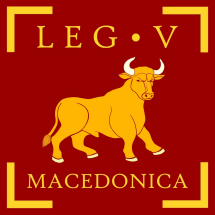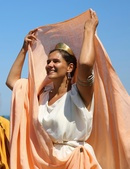



Select Language:
Новости легиона
| 05 june 2023 | |
 С понедельником всех. 29282 | |
| 03 june 2023 | |
 Маша , с Днем Рождения!  подробнее 29266 | |
| 03 june 2023 | |
 Шило из каструма Виндоланда. 29264 | |
| 02 june 2023 | |
 небольшой римский раскладничек )) подробнее 29256 | |
| 31 may 2023 | |
Видео "Princely helmet from Co?ofene?ti , mid. 5th c. BC, National History Museum of Romania Collection": Княжеский шлем из Коцофенешть - уникальный объект, свидетель истории первых гетских правителей 6-5 веков до н.э. Представляем вашему вниманию новый проект Национального музея истории Румынии - видео с рассказами об уникальных объектах из соей коллекции. Первый ролик подготовлен… подробнее A unique object, exceptional testimony to the history of the first Getic rulers from the 6th to 5th centuries BC in the area of the Carpathians and the Lower Danube and their connections with the Greek, Thracian and Scicitic civilizations! The golden parade helmet at Cotofene?ti is an iconic artifact for understanding the daily life and ideology of the Getic elite from the final period of the First Iron Age. Discovered by chance in 1927, preserved for several decades at the former National Museum of Antiquities, from the 70s of the 20th century this is one of the reference archaeological goods in the collections of the National History Museum of Romania. Made of three welded gold plates, on which a complex decoration was made by punching, consisting of geometric, anthropomorphic and zoomorphic motifs. This precious metal helmet opens the series of Getic “princely” helmets, a type specific to the area inhabited by these tribes, which has the front decorated with two magical eyes, with apotropaic character. Each cheek guard is decorated with the representation of a male character, who sacrifices – with an akinakes type dagger (with antennae) – a ram kneeling. The man wears a conical helmet or cap, a “scale” shirt, a belt for fastening weapons, an embroidered cloak or animal fur attached to his shoulder. On the belt, at the back, he's wearing a short-tailed double axe. The decoration of the neck guard is displayed on two registers: on the upper one are depicted four sphinxes, and on the lower one are represented three griffins, which have in their muzzles a leg of herbivorous animal. The piece illustrates the use by the warrior lords of extremely expensive pieces of weaponry, through the material from which they were made and of great prestige, by their symbolism. The decor of this prestigious good emphasizes very strongly the interweaving of elements of civilization and artistic ones originating from the world of the peoples of the Eurasian steppes (weapons, costume, the motif of fantastic animals – griffins devouring herbivores) and Greek – the sphinx, whose very distant echo or lack of familiarity with them, makes its rendering rather like a winged lion (with a dog's head). The size of the helmet suggests that its wearer will have been a teenager or a character of below average stature. Text: Ernest Oberl?nder-T?rnoveanu PhD, Corina Bor? PhD Photos: eng. Marius Amarie © NATIONAL HISTORY MUSEUM OF ROMANIA 29254 | |


